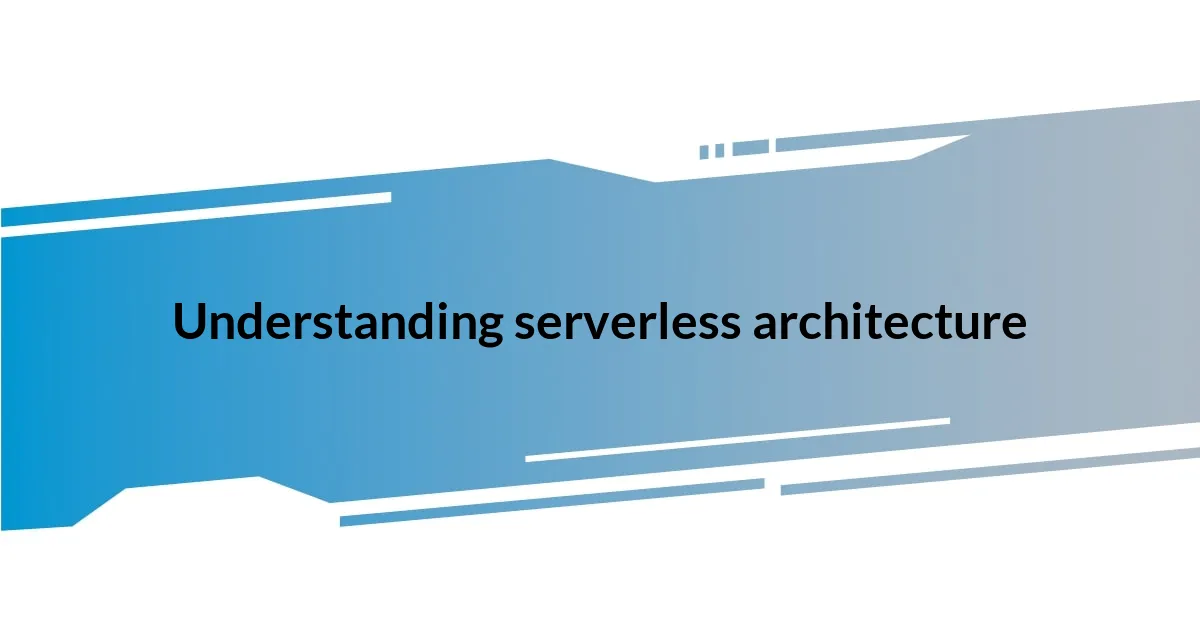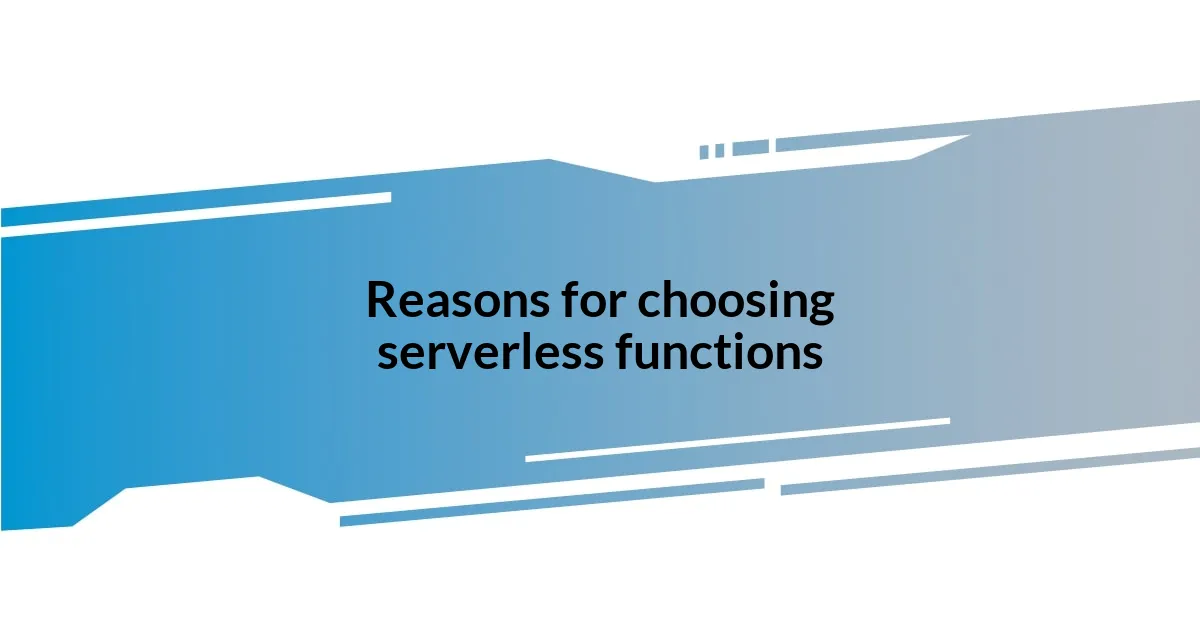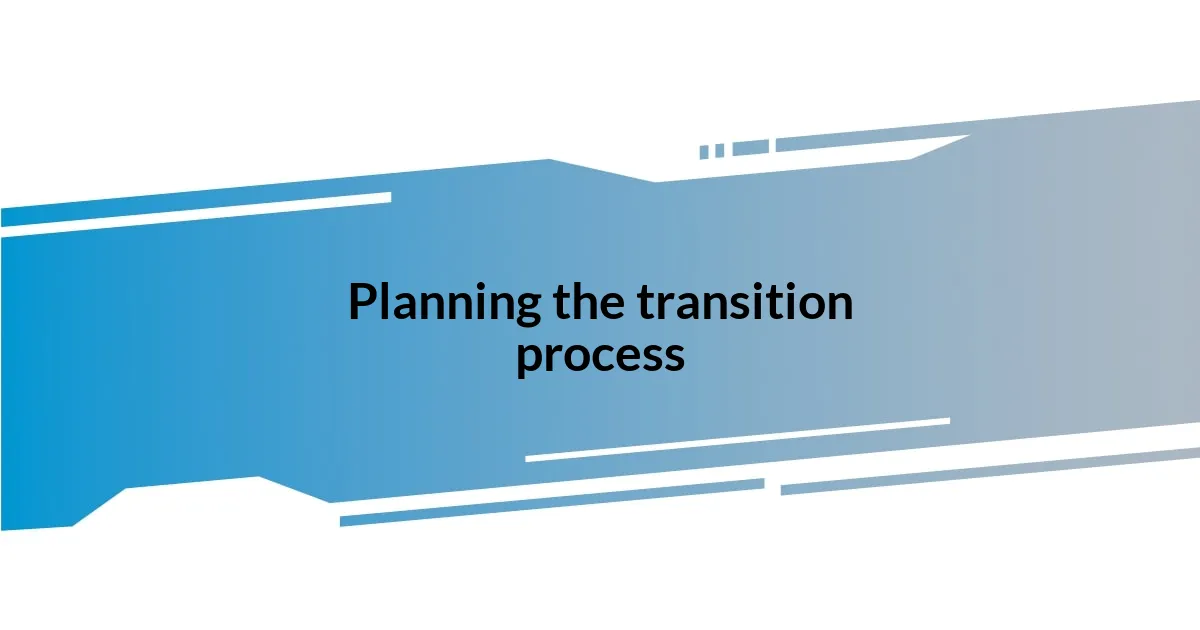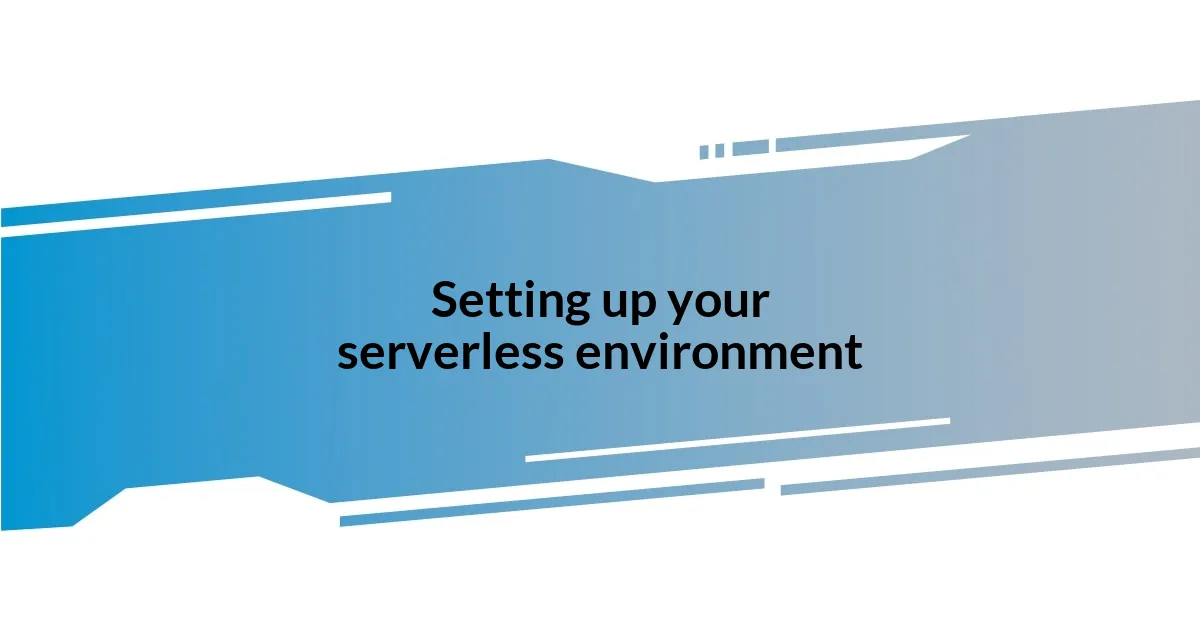Key takeaways:
- Serverless architecture focuses on code over infrastructure, allowing developers to dedicate more time to building features and enhancing user experience.
- Key advantages include reduced operational overhead, automatic scaling, and a pay-as-you-go pricing model, ultimately leading to more predictable expenses.
- It’s essential to identify suitable workloads for serverless, such as event-driven tasks and microservices, to maximize efficiency and performance.
- Implementing best practices, like keeping functions small and prioritizing monitoring, is crucial for optimizing serverless performance and managing costs effectively.

Understanding serverless architecture
When I first dove into serverless architecture, I encountered an eye-opening realization: it’s all about focusing on code rather than infrastructure. Picture this—running applications without the worry of managing servers feels like a breath of fresh air. Instead of spending hours on setup and maintenance, I could dedicate my time to building features that truly mattered.
The beauty of serverless functions lies in their ability to scale automatically. I remember a particular project where traffic spiked unexpectedly. Instead of panicking, I watched in awe as my serverless functions effortlessly handled the load. It made me wonder, how many developers fear scaling issues, when the solution might be as simple as embracing serverless?
At its core, serverless architecture promotes a pay-as-you-go model, which is a game changer for budgeting. I fondly recall my early skepticism about this approach, questioning whether it would truly save costs. After months of using it, I’ve learned it allows for more predictable expenses as you only pay for the execution time. Isn’t it freeing to think that technology can actually align with fiscal responsibility?

Reasons for choosing serverless functions
When transitioning to serverless functions, one major reason I found compelling was the reduced operational overhead. Before this shift, I spent countless evenings troubleshooting and managing server quirks. Now, I rarely think about the underlying infrastructure, which allows me to focus on what truly excites me—writing code and enhancing user experience.
Another appealing aspect is the flexibility serverless functions offer. There was a time when I had to stick to specific technologies and frameworks due to server constraints. Now, I can easily pick and choose the right tools for each task, meaning I’m able to leverage the latest libraries without the dread of compatibility issues. This newfound freedom sparks my creativity and fuels my passion for developing innovative solutions.
Lastly, I appreciate the robust ecosystem surrounding serverless services. The community support and available integrations are simply amazing. I vividly recall participating in a serverless meetup where developers shared their success stories and best practices. Engaging with peers who truly understand the benefits made my transition smoother and deeper, reinforcing my decision to embrace this cutting-edge architecture.
| Traditional Architecture | Serverless Functions |
|---|---|
| High operational overhead | Reduced operational focus |
| Infrastructure management required | No server management |
| Fixed resources and capacity | Auto-scaling capabilities |
| Rigid technology stack | Flexible technology choices |
| Predictable spending | Pay-as-you-go pricing |

Identifying suitable workloads for serverless
Identifying suitable workloads for serverless functions is like discovering hidden treasures within your existing architecture. I’ve often found that the most suitable tasks are those that are event-driven or require sporadic, unpredictable execution. For instance, when working on an image processing feature, I realized how beneficial serverless functions were to handle uploads in real-time without any lag. The immediate feedback I received from users made it all worthwhile.
Here are some key workloads that align beautifully with serverless architecture:
- Microservices: Independent functions that serve single tasks.
- Data processing tasks: Examples include batch processing or real-time data transformation.
- APIs: Lightweight APIs that need to scale according to demand.
- Event-driven processes: Functions triggered by specific events like user uploads or database changes.
- Scheduled jobs: Tasks that need to run periodically without constant uptime.
As I explored these workloads, I noticed the emotional relief that came with letting go of the constant server management; the focus shifted solely to crafting exceptional user experiences. It was liberating to embrace a model where I could scale confidently without the looming fear of crashing under pressure. Each successful deployment felt like a small victory that deepened my connection with serverless functions.

Planning the transition process
Planning the transition to serverless functions requires careful thought and strategy. I recall spending a weekend sketching out my current architecture, jotting down every service and feature involved. It was a bit like piecing together a puzzle: understanding how everything fit helped me identify areas that could benefit the most from this new approach. Consider what your primary goals are, like reducing costs or improving scalability, and align those with the right workloads.
One of the pivotal steps in my planning was assessing my existing workloads to figure out which could be seamlessly migrated to a serverless model. I remember staring at my task list and feeling overwhelmed; which tasks would actually thrive in this environment? To simplify the decision, I created a rubric based on the frequency of task execution, the need for scaling, and event-driven triggers. This not only narrowed my options but also anchored my focus, allowing me to target the most impactful changes.
As I mapped out the transition, I couldn’t help but feel a mix of excitement and apprehension. Transitioning to a new architecture often feels like a leap of faith—what if things didn’t work out as planned? However, I found that taking this step with a solid plan in place eased my nerves. What became clear to me was that commitment to the process, along with adaptability, would be my greatest allies. Trusting the journey and being open to adjustments along the way ultimately transformed my project, turning those uncertainties into opportunities for growth.

Setting up your serverless environment
Setting up your serverless environment can feel like embarking on a thrilling adventure. In my experience, the first step is selecting the right cloud provider that aligns with your needs. Think about what’s important for you—cost, ease of use, or maybe a robust set of features. When I first dabbled in serverless, I explored several options and found myself drawn to AWS Lambda for its flexibility and rich ecosystem.
Once I settled on a provider, I quickly realized that setting up the necessary frameworks and tools is essential for a smooth experience. I started with the Serverless Framework, which made deploying functions a breeze. I vividly remember the sense of accomplishment I felt when I first ran a function with just a few lines of code. It was almost magical to see my code execute in real-time without the hassle of managing underlying servers. What tools have you considered? Your choice can significantly impact your workflow and productivity.
As I configured my environment, I discovered the importance of monitoring and logging. Initially, I thought I could skip this step, but I learned the hard way that tracking function performance is crucial. Once, after deploying a function for processing user uploads, I faced unexpected traffic spikes. Without monitoring, I would have been blindsided by failures. By setting up alerts early on, I felt a newfound sense of control, knowing that I could respond swiftly to any issues. How do you plan to stay informed about your functions’ performance? Building that awareness into your environment from the start can make a world of difference.

Best practices for serverless functions
Best practices for serverless functions can really shape the smoothness of your transition. From my own journey, I learned that keeping functions small and focused is key. When I packed too much into one function, I ended up with a tangled mess that was hard to debug. Small, single-purpose functions not only simplify the management process but also boost reusability—if one function can be called from multiple places, that’s a win in my book!
It’s also vital to stay cost-conscious with your serverless functions. I remember the surprise I felt when my first few functions ran wild, racking up costs during off-peak hours. Setting up budget alerts has been a game-changer for me. It’s like having a safety net—when I see costs creeping up, I can dive in and optimize. Do you have a plan for keeping your costs in check? Being proactive here can save you from sleepless nights worrying about unexpected bills.
Lastly, embracing a culture of testing is crucial. Early on, I was hesitant about writing tests for my serverless functions, thinking I could just fix things on the go. But I soon realized that automated tests not only saved me from headaches down the line but also gave me confidence in my deployments. Imagine deploying a function knowing it has been rigorously tested—such peace of mind! What testing strategies can you incorporate into your workflow? Building this discipline will make your serverless journey significantly smoother.

Monitoring and optimizing serverless performance
Monitoring serverless performance is about being proactive rather than reactive. I remember the frustration I faced when I first launched my serverless functions without a proper monitoring setup. One function, designed for processing transactions, started failing sporadically during peak times. Without monitoring tools, I spent hours digging through logs, trying to pinpoint the issues. That experience taught me the value of having real-time insights and alerts in place. What monitoring solutions have you considered? Having the right tools can be your safety net.
Using a combination of monitoring metrics felt like having my finger on the pulse of my application. I’ve become a big fan of key performance indicators (KPIs) such as latency and invocation errors. When I noticed that the average response time for my image processing function was creeping up, I could quickly dive in and optimize the code. This has saved me from potential bottlenecks and poor user experiences. Are you tracking the right KPIs for your functions? Such insights can be game-changing.
Optimizing performance is an ongoing journey. I often find myself learning from each deployment, tweaking things to get better results. For example, I used to overlook cold start times, but as I scaled my application, I realized that optimizing function size and using provisioned concurrency could substantially improve performance. It’s like fine-tuning an instrument—small adjustments can lead to a more harmonious outcome. How are you approaching performance optimizations? Keeping a growth mindset will not only enhance your technical skills but also ensure your serverless applications run seamlessly.